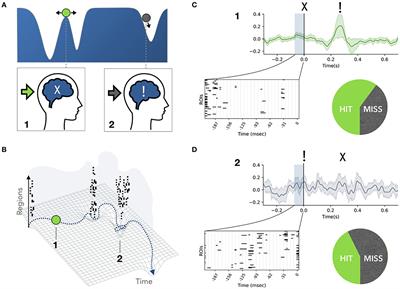Spontaneous neuronal avalanches as a correlate of access consciousness
Decades of research have advanced our understanding of the biophysical mechanisms underlying consciousness.

However, an overarching framework bridging between models of consciousness and the large-scale organization of spontaneous brain activity is still missing. Based on the observation that spontaneous brain activity dynamically switches between epochs of segregation and large-scale integration of information, we hypothesize a brain-state dependence of conscious access, whereby the presence of either segregated or integrated states marks distinct modes of information processing. We first review influential works on the neuronal correlates of consciousness, spontaneous resting-state brain activity and dynamical system theory.
Then, we propose a test experiment to validate our hypothesis that conscious access occurs in aperiodic cycles, alternating windows where new incoming information is collected but not experienced, to punctuated short-lived integration events, where conscious access to previously collected content occurs. In particular, we suggest that the integration events correspond to neuronal avalanches, which are collective bursts of neuronal activity ubiquitously observed in electrophysiological recordings. If confirmed, the proposed framework would link the physics of spontaneous cortical dynamics, to the concept of ignition within the global neuronal workspace theory, whereby conscious access manifest itself as a burst of neuronal activity.
Read the full article at the original website
References:
